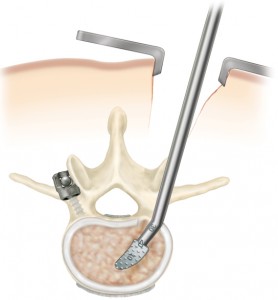3 Things You May Not Know About Minimally Invasive Spine Surgery
 If you require spine surgery to alleviate pain and correct an ongoing spine disorder, Dr. Sharma has mostly likely discussed minimally invasive spine surgery with you. This type of procedure is a good fit for many patients, but you may have questions about the surgery, which is much newer than traditional procedures.
If you require spine surgery to alleviate pain and correct an ongoing spine disorder, Dr. Sharma has mostly likely discussed minimally invasive spine surgery with you. This type of procedure is a good fit for many patients, but you may have questions about the surgery, which is much newer than traditional procedures.
Below we will share three facts about minimally invasive spine surgery so you can better understand the procedure and its implications on your health. Please use these questions as a jumping off point for a more personalized and in-depth conversation with Dr. Sharma.
1. Most likely you are a candidate for minimally invasive spine surgery. Today most surgeries can be performed using some aspect of minimally invasive surgery. But, as Dr. Sharma will tell you, certain conditions require standard open treatment. These include tumors, infections, and high-degree scoliosis. Dr. Sharma will help you choose the type of surgery that is best for your personal situation and diagnosis.
2. Typically, minimally invasive spine surgery means shorter hospital stays. In fact, most surgeries decrease your hospital stay by one-half. Some surgeries, such as an endoscopic discectomy, are performed the same day, with the patient being eligible to go home later that day. Other surgeries, such as various types of lumbar fusion surgery, require a hospital day of only two to three days. Compare this with the previous hospital stay of five to seven days.
3. Recovery time from each minimally invasive spine surgery will be different for each patient. For example, some patients return to full activity in just six weeks, while others may require more time. Participation in a physical therapy program can help to safely begin the process of returning to regular activities.
We’re sure you have more questions about minimally invasive spine surgery. Please don’t hesitate to get in touch with Dr. Sharma to plan for your own procedure.

Categories
Archives
Contact Dr. Mudit Sharma
Phone: (571) 921-4877
Toll Free: (855) 774-6334
Monday – Thursday: 8am – 4pm
Friday: 8am – 2pm
Fredericksburg
4604 Spotsylvania Parkway, Suite 300 Fredericksburg, VA 22408
Manassas
8650 Sudley Road, Suite 315
Manassas, VA 20110-4418
